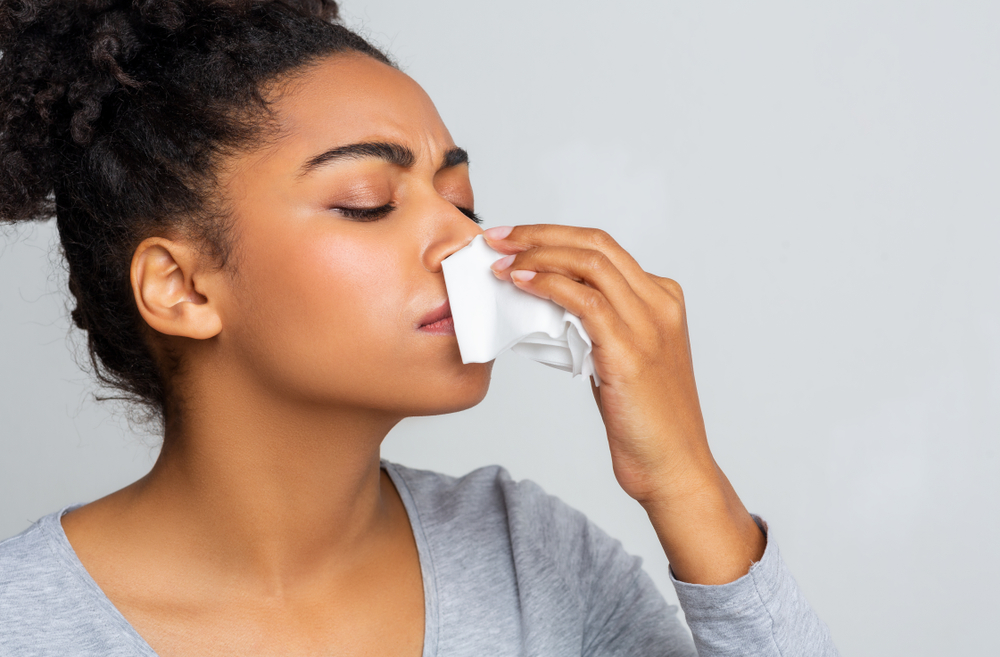That persistent dry feeling in your nose might seem like just another minor annoyance in your day, something you dismiss with a quick swipe of a tissue. But what if that seemingly innocent dryness is actually compromising one of your body’s most important defense systems? Your nose does far more than just smell the roses and hold up your sunglasses — it’s actually an ingeniously designed filtration system that stands between the outside world and your vulnerable respiratory tract.
The invisible shield most people ignore
Your nose is essentially the bouncer at the door of your respiratory club, deciding what gets in and what stays out. The key to this security system? A thin layer of mucus that lines your nasal passages. This isn’t just random slime — it’s a carefully calibrated substance containing antibodies, enzymes, and specialized proteins designed to trap and neutralize potential threats.
When your nasal passages become dry, this protective mucus barrier thins out or disappears entirely in spots, essentially creating gaps in your defensive line. Viruses, bacteria, allergens, and pollutants that would normally get trapped and eliminated can slip past your weakened defenses and make their way deeper into your respiratory system.
The result isn’t just an increased risk of catching whatever bug is going around. Chronic nasal dryness can lead to recurring sinus infections, prolonged cold symptoms, and even make conditions like asthma and allergies more difficult to manage. That seemingly innocent dry nose might actually be leaving the door wide open for all sorts of unwelcome visitors.
The surprising immune function happening in your nose
Your nasal passages aren’t just passively filtering air — they’re actively engaging with potential threats in ways most people never realize. The mucus in your nose contains secretory immunoglobulin A, an antibody that acts as a first responder against invading pathogens. This specialized antibody can neutralize viruses before they even have a chance to infect your cells.
Equally important are the microscopic hair-like structures called cilia that line your nasal passages. These tiny biological sweepers move in coordinated waves to transport mucus toward the back of your throat, carrying trapped particles with it. This self-cleaning mechanism, known as mucociliary clearance, is your body’s way of continuously taking out the respiratory trash.
But here’s the critical part — both of these defense mechanisms require proper hydration to function effectively. When your nasal passages dry out, antibody concentration drops, and those hard-working cilia become sluggish or stop moving altogether. Your nose essentially transforms from an active defense system into a passive tunnel, allowing potential threats direct access to your lungs and sinuses.
The hidden dangers of chronic nasal dryness
Beyond the immediate vulnerability to infections, persistent nasal dryness can trigger a cascade of problems that affect your overall respiratory health. When protective mucus disappears, the delicate tissues inside your nose become irritated and inflamed. This inflammation can lead to microscopic cracks in the nasal lining, creating entry points for pathogens directly into your bloodstream.
Chronic dryness also alters the microbiome of your nose — that community of beneficial bacteria that helps maintain the right balance in your nasal ecosystem. When beneficial bacteria diminish, opportunistic pathogens can establish themselves, creating a situation where you become more susceptible to recurring infections.
Perhaps most concerning is the impact on your sense of smell. The odor-detecting neurons in your nose require a moist environment to function properly. Persistent dryness can damage these specialized cells, potentially leading to long-term reduction in your ability to smell — which not only affects your enjoyment of food but can also prevent you from detecting important danger signals like smoke, gas leaks, or spoiled food.
The winter connection and seasonal vulnerability
Have you ever noticed that dry nose issues seem to peak during winter months? This isn’t coincidental. Winter brings a double-whammy to your nasal health — outdoor air tends to be drier in cold weather, while indoor heating systems further strip moisture from the environment.
This seasonal dryness explains why cold and flu viruses spread more easily during winter months. It’s not just that people are crowded indoors — it’s that their nasal defenses are compromised by the dry conditions. When you combine weakened nasal immunity with increased exposure to other people’s germs, you have the perfect recipe for respiratory infections.
The drop in temperature itself also impacts your nasal function. Cold air causes blood vessels in your nose to constrict, reducing blood flow to the nasal tissues. This decreased circulation means less moisture reaches the surface of your nasal passages, further contributing to dryness and reduced immune function right when you need it most.
Surprising factors drying out your nose
While seasonal changes are obvious culprits, several other factors might be secretly dehydrating your nasal passages:
Antihistamines and decongestants are designed to dry up excess mucus, but they often overshoot the target, leaving your nasal passages parched and vulnerable. This creates a frustrating situation where medication for one problem increases your risk for another.
Air travel is notoriously dehydrating for your entire body, but your nasal passages take the biggest hit. The recirculated cabin air typically has a humidity level below 20 percent — drier than many deserts. A single long flight can significantly impair your nasal immune function.
Mouth breathing, whether from congestion, sleep apnea, or habit, routes air away from your nose’s moisture-adding systems. This creates a vicious cycle where nasal dryness leads to congestion, forcing more mouth breathing, which further dries out your nose.
Digital device use often reduces how frequently you blink, which might seem unrelated to your nose. However, decreased blinking leads to eye dryness, which your body often compensates for by redirecting moisture from other areas — including your nasal passages.
Alcohol and caffeine increase fluid loss throughout your body, including the thin layer of moisture that protects your nasal passages. That post-happy hour stuffy nose might actually be a sign of nasal dryness rather than an allergic reaction.
The moisture restoration toolkit your nose needs
Addressing nasal dryness effectively requires a multi-faceted approach that works with your body’s natural systems rather than against them:
Saline nasal sprays provide immediate relief by directly moistening dry tissues. Look for preservative-free options that mimic your body’s natural salinity. Unlike medicated nasal sprays, saline can be used as often as needed without causing rebound effects.
Proper hydration starts from the inside out. While drinking water won’t directly squirt into your nasal passages, maintaining overall body hydration helps ensure your mucous membranes have the moisture they need to function optimally.
Adding humidity to your environment, especially in sleeping areas, can dramatically improve nasal health. Aim for indoor humidity levels between 40-50 percent — enough to support nasal moisture without creating conditions for mold growth.
Nasal irrigation systems like neti pots take saline therapy to the next level by gently flushing your nasal passages. This not only adds moisture but helps remove irritants and excess mucus that can contribute to inflammation and dryness.
Nutritional support through foods rich in omega-3 fatty acids can help reduce inflammation in nasal tissues. Meanwhile, zinc and vitamin A play crucial roles in maintaining the integrity of mucous membranes and supporting proper healing of irritated nasal passages.
Steam inhalation offers another effective approach, whether from a hot shower, facial steamer, or simply a bowl of hot water with a towel over your head. The warm moisture helps restore nasal hydration while potentially loosening mucus and reducing inflammation.
When to seek professional guidance
- While most cases of nasal dryness respond well to self-care measures, certain situations warrant medical attention:
- Persistent bleeding from your nose suggests the dryness has progressed to the point of tissue damage and may require specialized treatment to promote healing.
- Recurring sinus infections despite your best efforts to maintain nasal moisture might indicate structural issues or chronic inflammation requiring medical intervention.
- Severe pain or pressure in your sinuses, especially when accompanied by thick, discolored nasal discharge, could signal a significant infection that needs proper diagnosis and treatment.
- Complete loss of smell that doesn’t improve with nasal moisture restoration deserves medical evaluation, as it may indicate other underlying conditions.
Your nasal passages deserve more attention than they typically receive in everyday health discussions. By understanding the critical immune functions happening right behind your nostrils and taking steps to maintain optimal nasal moisture, you’re not just avoiding the discomfort of a dry nose — you’re strengthening one of your body’s most important defense systems against a world full of respiratory challenges.















